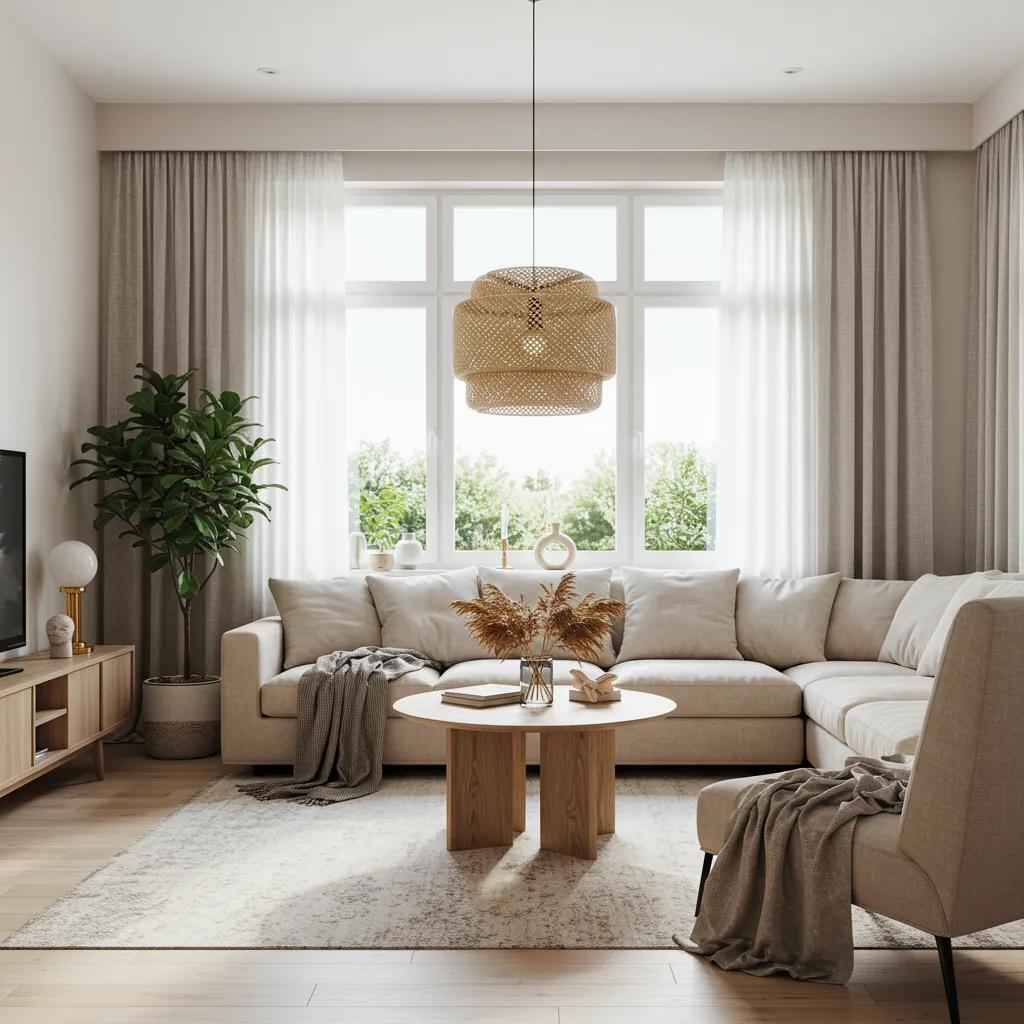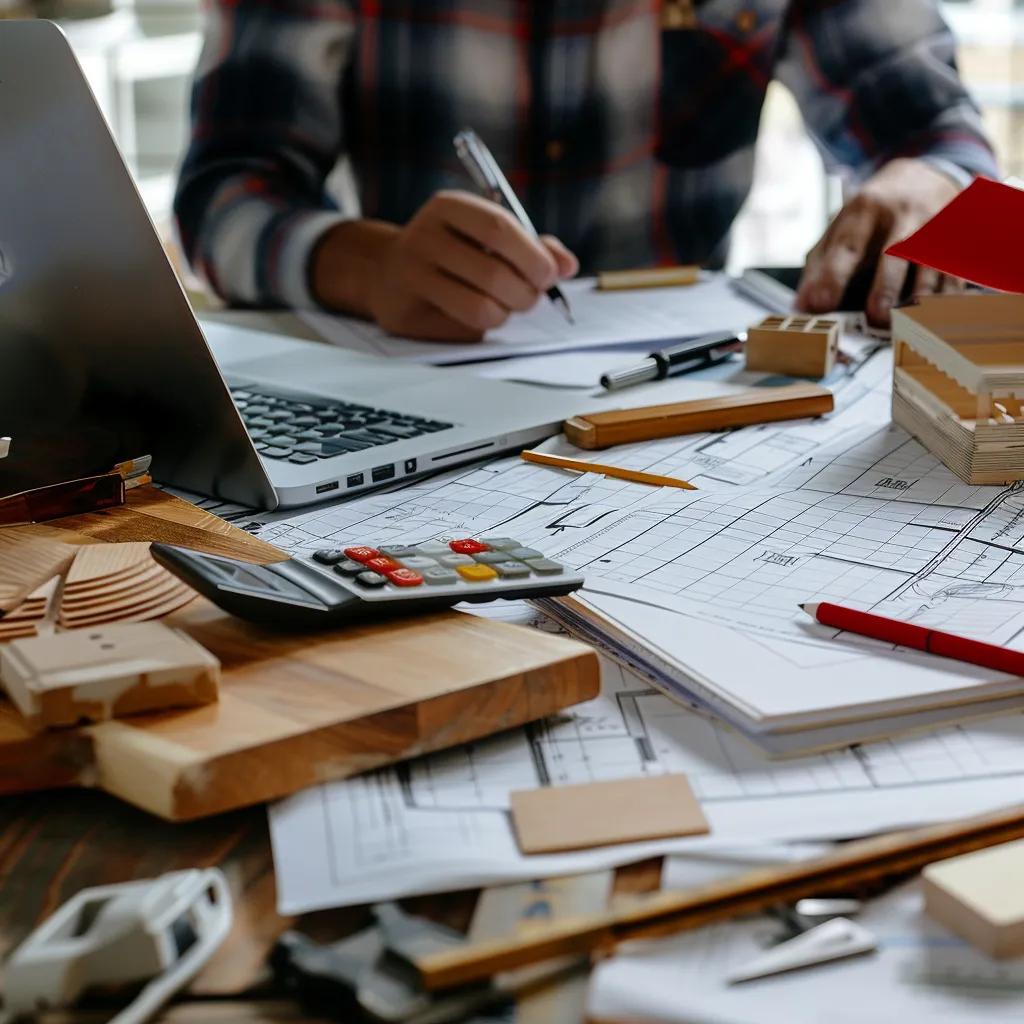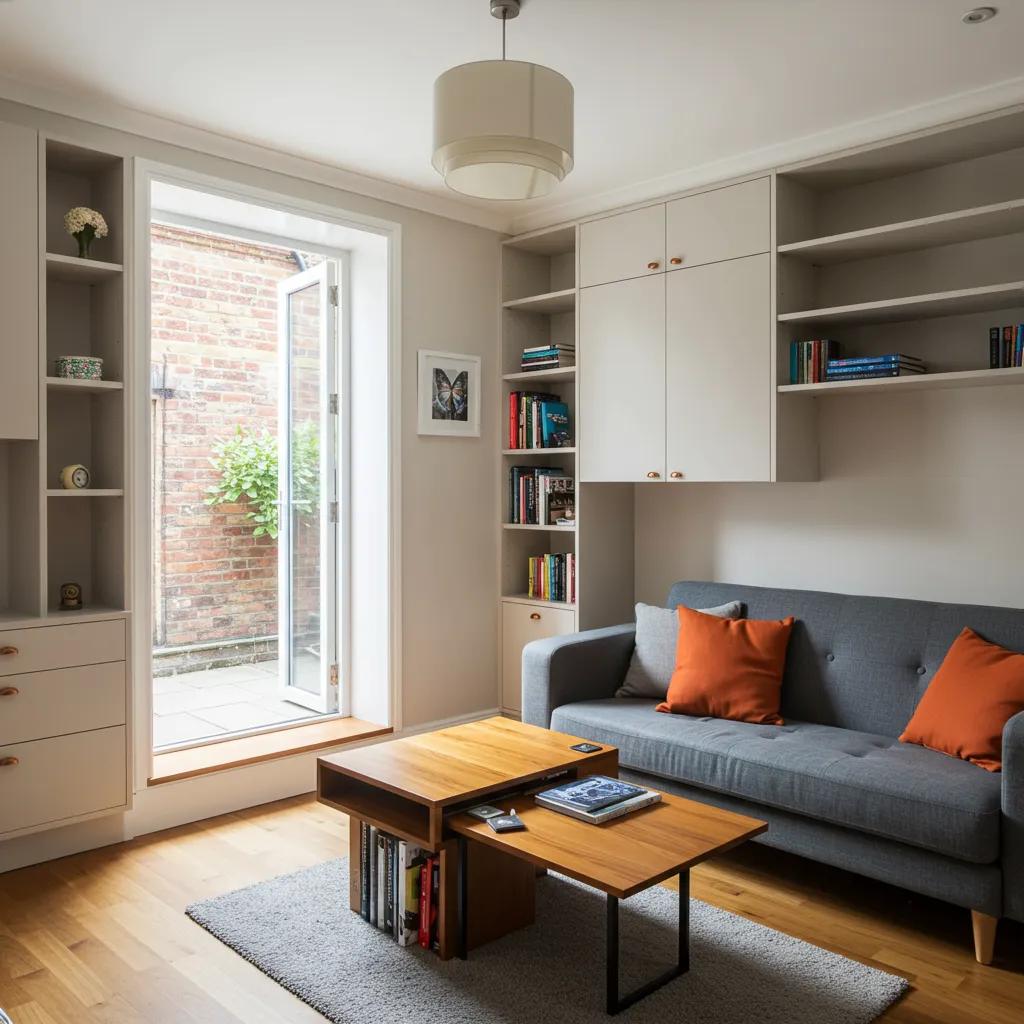Elevate Your Home: Top Interior Styling Trends for 2025 & Sustainable Solutions

By late 2025, our approach to creating living spaces has transformed. Interior styling trends now focus on enhancing well-being, embracing environmental responsibility, and ensuring seamless functionality. Homeowners are tasked with harmonising aesthetics, comfort, and enduring value while navigating a complex landscape of material choices and technological advancements. This guide unveils the most impactful design movements—sustainability, biophilic principles, Japandi minimalism, smart home integration, and luxury coastal styling. Each trend is brought to life with practical applications and regional insights relevant to the Gold Coast, Brisbane, and Northern NSW. We’ll define each style, explore its core components, and explain its significance for contemporary residences. Discover how HASL’s renovation expertise can bring these concepts to fruition and learn the step-by-step processes for integrating them into your unique project. By connecting these themes, this article aims to leave you informed, inspired, and ready to reimagine your home with the latest interior styling innovations.
What Are the Leading Interior Design Trends for Modern Homes in 2025?
The top interior design trends for 2025 signal a move towards more intentional living. Spaces are increasingly designed to celebrate sustainable materials, foster connections with nature, adopt minimalist yet functional layouts, and incorporate integrated technology that boosts comfort and efficiency. These shifts respond to homeowners’ growing priorities regarding environmental impact, personal health, and customisation, while also encouraging fluid transitions between indoor and outdoor living areas. Below are three key directions shaping contemporary interiors this year.
Which Styles Define Contemporary Interior Design Trends?
Contemporary interior styling in 2025 masterfully blends streamlined forms with natural textures, crafting spaces that feel both cutting-edge and enduringly elegant.
- Minimalist Functionality – Open-plan layouts, versatile furniture, and understated colour palettes cultivate a sense of clarity and tranquility.
- Warm Modernism – Crisp lines are complemented by tactile materials like timber, leather, and stone, infusing minimalist structures with inviting warmth.
- Curved Silhouettes – Softer edges in furniture and architectural elements promote fluid movement and visual ease, enhancing comfort.
Collectively, these elements forge interiors that strike a balance between simplicity and character, creating a perfect foundation for seamlessly integrating sustainability and biophilic concepts.
How Are Sustainability and Eco-Friendly Materials Shaping Modern Interiors?
Sustainable interior styling prioritises the use of responsibly sourced materials and low-impact finishes to minimise environmental footprints and enhance indoor air quality. By opting for materials like recycled timber, low-VOC paints, and natural fibres, homeowners can reduce emissions and promote healthier living environments. Energy-efficient fixtures, including LED lighting, high-performance glazing, and insulated joinery, are also integral to this green approach. Embracing these choices results in durable, healthier spaces and future-proofs homes against rising energy costs, making them more appealing for resale or long-term enjoyment.
What Role Does Technology Play in Current Home Styling?
Smart home integration has evolved beyond individual gadgets to become a cohesive design element. Automation systems, discreet wiring, and intuitive controls are now fundamental to aesthetic choices. Voice-activated lighting, zoned climate control, and sensor-driven window treatments seamlessly integrate with minimalist cabinetry and concealed panels, maintaining clean visual lines. Technology ensures that living spaces adapt to occupants’ daily routines—thermostats learn preferences, lighting adjusts to the time of day, and security systems are discreetly incorporated into the home’s architecture. The outcome is an environment that is both sophisticated in appearance and intuitively responsive to residents’ comfort needs, perfectly bridging form and function.
Smart Home Systems for Energy Efficiency and Sustainable LivingAs the urgent need for efficient and sustainable energy usage becomes ever more apparent, interest in Smart Homes is on the rise. The SESAME-S project (SEmantic SmArt Metering – Services for Energy Efficient Houses) uses semantically linked data to actively assist end-consumers in making well-informed decisions and controlling their energy consumption. By integrating smart metering and home automation functionality, SESAME-S works to effectively address the potential mass market of end-consumers with an easily customisable solution that can be widely implemented in domestic or business environments, with expected savings of over 20% from the total energy bill. The developed system provides a basis for conceptualising, demonstrating, and evaluating a variety of innovative end-consumer services and their user interface paradigms. In this paper, we present the SESAME-S system as a whole and discuss the semantically enabled services, demonstrating that such systems may achieve broad acceptance in the future. The data obtained through such systems will be invaluable for future global energy-efficiency strategies and businesses.Sesame-s: Semantic smart home system for energy efficiency, A Fensel, 2013
How Can Sustainable Home Design Trends Enhance Your Modern Living Space?
Sustainable design in residential interiors focuses on resource efficiency, occupant health, and long-term durability, all without compromising on style. It redefines luxury by valuing environmental credentials and well-being, resulting in homes that are both economically and environmentally sound, while maintaining sophisticated aesthetics. Adopting this approach elevates living standards and strengthens a property’s market appeal by aligning with evolving buyer expectations.
What Eco-Friendly Materials and Energy-Efficient Solutions Are Popular?

Below is a comparison of leading sustainable materials and their defining attributes to assist you in selecting the optimal choice for your renovation project.
| Material Type | Key Characteristic | Performance Benefit |
|---|---|---|
| Recycled Timber | Upcycled hardwood content | Minimises deforestation impact and adds unique character |
| Low-VOC Paint | Minimal off-gassing | Enhances indoor air quality and occupant health |
| Cork Flooring | Renewable harvest cycle | Offers excellent thermal insulation and natural resilience |
| Reclaimed Brickwork | Historic character | Provides thermal mass and reduces embodied carbon |
| Bamboo Veneers | Rapid regrowth | High strength-to-weight ratio and sustainable sourcing |
Each selection contributes to a reduced carbon footprint and promotes healthier living conditions, making sustainable design both a responsible and visually appealing choice.
How Does Natural Light Optimisation Improve Sustainable Interiors?
Maximising natural daylight through thoughtfully placed windows, skylights, and reflective surfaces significantly reduces the need for artificial lighting and lowers energy consumption. By orienting windows to capture morning and afternoon sun, interiors become brighter and maintain more stable temperatures. Light shelves and clerestory windows further distribute sunlight deep into living areas, positively impacting mood, supporting natural circadian rhythms, and reducing lighting expenses. These design strategies reinforce a commitment to sustainability while enhancing the perception of space and occupant comfort.
How Does HASL Integrate Sustainable Design in Gold Coast and Brisbane Renovations?
HASL embeds sustainable principles from the very beginning of each project, starting with a detailed site analysis that considers sun paths, prevailing breezes, and local material sourcing. Through close collaboration with suppliers of certified green timber and low-impact finishes, every renovation balances high performance with sophisticated design. Integrated energy modelling allows homeowners to visualise potential cost savings before construction commences, while comprehensive on-site recycling plans minimise waste. This streamlined process ensures that sustainability is a core focus without compromising the premium quality of a HASL-crafted home.
Which Local Regulations and Materials Influence Sustainable Renovations?
Building codes in Queensland and NSW now stipulate minimum thermal performance standards for glazing and insulation, encouraging the use of double-glazed windows and high-R-value wall systems. The availability of local materials, such as plantation-grown hoop pine and regionally sourced natural stone, helps reduce transportation emissions and supports local craftspeople. A thorough understanding of these regulations and effective utilisation of local supply chains ensures compliance, cost-effectiveness, and a strong connection between the home and its environment.
What Is Biophilic Design and How Does It Benefit Modern Homeowners?
Biophilic design cultivates a profound connection between occupants and the natural world through the strategic incorporation of organic patterns, lush greenery, and natural materials. By recreating aspects of the outdoor experience within interior spaces, this approach significantly enhances mental well-being, boosts productivity, and improves overall quality of life. Homes that feature water elements, living walls, and abundant natural light become restorative sanctuaries rather than just places to live.
What Are the Core Elements of Biophilic Interior Styling?

Key components of a biophilic design scheme include:
- Indoor Plant Ecosystems – Vertical gardens and curated plant arrangements that purify the air and bring life to rooms.
- Natural Textures – Unfinished timber, textured stone, and woven fibres create a rich tactile experience.
- Water Features – Integrated wall-mounted fountains or tabletop installations provide soothing ambient sounds.
- Views to Nature – Expansive glazing that frames garden vistas or landscaped courtyards.
These elements work harmoniously to create environments that feel vibrant and alive, contributing to both aesthetic richness and human health.
BiophilicDesignPatterns for Health and Well-being in the Built Environment… and well-being. The intention of this paper is to serve as a catalyst for discussing biophilic design … All this, so that we may better capture the benefits afforded by biophilia in our designs …Biophilic design patterns: emerging nature-based parameters for health and well-being in the built environment, CO Ryan, 2014
How Does Biophilic Design Improve Well-being and Productivity?
Exposure to natural elements has been scientifically shown to reduce stress hormones, elevate mood, and sharpen cognitive functions. Research indicates that indoor plants can increase ambient humidity, filter airborne pollutants, and support respiratory health. The gentle sound of flowing water and the visual patterns found in nature also have a calming effect on the mind, fostering concentration and creativity. Consequently, biophilic interiors promote more harmonious daily routines and a deeper sense of connection to the surrounding environment.
How Does HASL Incorporate Biophilic Elements in Brisbane and Northern NSW Homes?
HASL’s renovation specialists expertly integrate biophilic features by collaborating with landscape designers to seamlessly incorporate indoor plant systems into custom cabinetry and shelving. Curved joinery designs echo natural forms, while stone benchtops sourced from local quarries bring the essence of the region indoors. Water features are custom-designed with concealed plumbing, and window placements are meticulously optimised to capture prevailing breezes and garden views. This holistic approach ensures that biophilic design is a fundamental aspect of each project’s atmosphere, not merely an add-on.
How Does Japandi Style Define Minimalist and Functional Modern Interiors?
Japandi is a sophisticated fusion of Japanese minimalism and Scandinavian warmth, resulting in interiors that champion simplicity, exceptional craftsmanship, and understated elegance. This hybrid style promotes uncluttered spaces that feel both serene and inviting, reflecting a shared cultural appreciation for natural materials, neutral colour palettes, and purposeful design.
What Are the Key Characteristics of Japandi Interior Styling?
Japandi interiors are distinguished by five core characteristics:
- Clean Lines and Low Profiles – Furniture featuring slender frames and minimal ornamentation.
- Neutral and Muted Palettes – Soft greys, gentle beiges, and off-whites establish a tranquil backdrop.
- Natural Materials – Light-toned woods, woven textiles, and ceramic accents highlight artisanal details.
- Functional Aesthetic – Every object is thoughtfully selected for both its utility and its beauty.
- Handcrafted Touches – Subtle imperfections in joinery or pottery celebrate the artistry of human workmanship.
These characteristics converge to create living areas that feel both profoundly calm and deeply personal.
JapaneseDesignConcepts for Contemporary Furniture: Simplicity, Nature, and CraftsmanshipJapanese culture embodies refinement, simplicity, aesthetics, and balance. It demonstrates how nature and aesthetics can be integrated into living spaces. The architecture of traditional Japanese dwellings is characterised by sliding doors and partitions that can be removed to create large, open, and flexible areas. Traditional furniture possesses a simple beauty and functionality that aligns perfectly with Japanese life and philosophy. Japanese wood products are uniquely crafted without the use of nails or screws, relying on precise joinery for durability. This technique results in highly durable and aesthetically pleasing furniture pieces. Japanese woodworking techniques, employing the art of traditional Japanese joinery, provide training within the wood workshop, fostering patience and respect for nature. This study reviews and highlights Japanese design concepts alongside a selection of traditional jointing techniques for furniture. Based on these principles, a contemporary table inspired by the Torii Gate was designed. Therefore, contemporary furnJapanese design concepts and traditional joints for modern furniture, EA Salca, 2025
How Do Japanese and Scandinavian Design Principles Combine in Japandi?
Japanese design contributes a deep respect for imperfection (wabi-sabi), uncluttered living spaces, and a strong connection between indoor and outdoor environments. Scandinavian influence brings the concept of ‘hygge’—coziness and comfort—along with layered textiles and strategies for maximising light during long, dark winters. Together, they create interiors that prioritise quality over quantity, balance open space with carefully chosen objects, and celebrate craftsmanship from both local and global sources. The result is a holistic aesthetic where functionality and warmth coexist harmoniously.
How Can Homeowners Personalise Japandi Style in Their Renovations?
Personalisation begins with selecting a restrained colour palette that complements existing architectural features, such as exposed brick, concrete, or timber beams. Custom joinery can incorporate open shelving for displaying curated pottery or books, while sliding screens offer adaptable privacy solutions. Textiles crafted from natural fibres like linen, cotton, and wool add tactile richness without introducing visual clutter. Collaborating with design specialists ensures that spaces remain uncluttered yet distinctly personal, with every element chosen for its functional and emotional resonance.
What Are the Benefits of Smart Home Integration in Modern Interior Styling?
Smart home systems transform residences into responsive environments that anticipate occupants’ needs while preserving the integrity of the interior design. By embedding automation and control seamlessly within the home’s architecture, these solutions deliver enhanced comfort, safety, and efficiency, all without compromising on style.
Which Smart Home Features Enhance Comfort and Energy Efficiency?
| Feature | Function | Resident Benefit |
|---|---|---|
| Automated Lighting | Adjusts brightness based on natural light levels | Reduces energy consumption and minimises eye strain |
| Climate Zoning | Allows for individual temperature control in each room | Enhances comfort and lowers HVAC operational costs |
| Motorised Shading | Automatically adjusts blinds and curtains | Manages solar heat gain and reduces glare effectively |
| Integrated Security | Discreetly placed cameras and smart locks | Improves safety and security without compromising aesthetics |
| Voice-Activated Audio | Built-in speaker systems for seamless sound | Provides effortless access to entertainment and information |
These integrated systems optimise daily living by dynamically adjusting environmental conditions, reducing utility bills, and supporting healthier, more convenient routines.
How Does Integrated Technology Influence Modern Home Aesthetics?
When technology is considered from the initial design phase, wiring, sensors, and control interfaces can be discreetly concealed within walls, joinery, or flooring, thereby maintaining clean sightlines. Elegant touch panels and intuitive mobile app controls replace cumbersome remote controls, while minimalist faceplates are designed to complement interior colour schemes. This integrated approach ensures that smart home functionality becomes an intrinsic part of the architectural design rather than a collection of disparate gadgets, elevating both the home’s performance and its visual harmony.
How Does HASL Plan and Implement Smart Home Systems in Gold Coast Renovations?
HASL’s process commences with a technology consultation where homeowners articulate their preferred automation features. Subsequently, detailed electrical and data plans are meticulously integrated with the interior design layout, ensuring all cables and devices are concealed within walls and joinery. Certified technicians collaborate closely with builders to install components before final finishes are applied, guaranteeing a seamless integration of hubs, sensors, and wiring. Post-handover, comprehensive training empowers residents to fully utilise and personalise their smart home routines, maximising both comfort and energy savings. For more information about our process, visit our process.
How Is Luxury Coastal Styling Shaping Modern Homes on the Gold Coast and Brisbane?
Luxury coastal interiors capture the essence of a sun-drenched, seaside lifestyle through light-filled spaces, natural colour palettes, and seamless indoor-outdoor transitions. This trend elevates beachfront living by combining resort-inspired details with bespoke joinery and premium materials engineered to withstand the demanding coastal environment.
What Defines Luxury Coastal Interior Design?
- Abundant Daylight – Expansive glazing and skylights maximise natural illumination.
- Oceanic Colour Palettes – Soft blues, sandy neutrals, and crisp whites evoke the serene coastal landscape.
- Natural Fibre Furnishings – Rattan, jute, and linen introduce texture and effortless elegance.
Together, these elements create a sense of tranquil retreat, where each space feels both relaxed and impeccably curated.
How Does Indoor-Outdoor Flow Enhance Coastal Living?
By aligning floor and ceiling levels between interior and exterior zones, the boundaries between spaces blur, and natural ventilation is enhanced. Sliding doors can be fully opened onto terraces, and continuous flooring materials extend seamlessly from living areas to patios. Thoughtfully designed landscaped courtyards, durable salt-resistant timber decking, and weather-proof joinery ensure longevity, allowing residents to fully embrace sea breezes and panoramic views without interruption. This synergy transforms each home into a cohesive and inviting sanctuary.
How Does HASL Deliver Bespoke Joinery and Premium Materials for Coastal Homes?
HASL meticulously selects marine-grade timbers, anodised aluminium frames, and UV-resistant fabrics to ensure enduring quality in salt-laden environments. Custom cabinetry is expertly engineered with concealed weep holes and corrosion-resistant fittings to protect interiors from moisture ingress. Bespoke feature walls, crafted from bleached teak or textured stone, serve as stunning backdrops to ocean vistas, while integrated seating and storage solutions are tailored to the unique lifestyle patterns of coastal living. This unwavering attention to detail ensures that every element is both highly functional and aesthetically pleasing.
How Can Homeowners Integrate These Interior Styling Trends into Their Renovations?
Successfully adopting multiple design trends requires a structured approach that balances conceptual development, meticulous budget planning, and efficient construction sequencing. By adhering to a clear roadmap, homeowners can harmoniously integrate sustainability, well-being, minimalism, and technology into a cohesive and beautiful whole.
What Are the Step-by-Step Processes for Incorporating Trends During Renovations?
Begin by crystallising your vision through the creation of mood boards and priority lists. Next, conduct a thorough site audit to assess existing conditions, solar orientation, and airflow. Then, collaborate closely with renovation specialists to develop a comprehensive design and specification package that aligns materials, fixtures, and technologies. Following design approval, proceed with procuring sustainable products, ordering custom joinery, and scheduling trades. Finally, coordinate on-site installation, conduct rigorous quality checks, and commission smart systems before applying the finishing touches.
How to Choose the Right Trend Based on Local Climate and Lifestyle?
Consider your daily routines, the seasonal temperature variations, and your preferences for outdoor living. In subtropical regions, prioritise maximising cross-ventilation and effective shading to minimise cooling requirements. For waterfront properties, select materials that are resistant to salt corrosion. Evaluate your family’s specific needs—perhaps open-plan kitchen renovations and living areas for entertaining, or quiet nooks for relaxation—and align trends that best support these activities. Expert guidance ensures that every decision aligns with both functional requirements and aesthetic aspirations.
Which HASL Projects Exemplify Successful Trend Integration?
Notable projects include the “Coastal Serenity” renovation in Burleigh Heads, which masterfully integrates biophilic gardens and luxury coastal palettes. A Brisbane inner-city townhouse showcases Japandi minimalism enhanced by integrated smart shading solutions. Furthermore, a Gold Coast family home exemplifies sustainable design through the use of recycled timber accents and off-grid solar power systems. These case studies highlight how the tailored application of modern styling trends results in distinctive, high-performance residences.
What Future Interior Styling Trends Will Influence Modern Homes?
Looking ahead, the convergence of sustainability, digital innovation, and health-focused design principles will continue to shape the future of home interiors, driven by emerging technologies and evolving lifestyle priorities. Anticipating these trajectories empowers homeowners to plan renovations that will remain relevant and desirable for decades to come.
How Will Sustainability and Technology Evolve in Home Design?
Next-generation sustainability will see the integration of on-site water harvesting, advanced passive solar design techniques, and the use of biocomposite materials in mainstream residential projects. Smart home systems will leverage artificial intelligence to predict occupant behaviour, optimise energy consumption, and even adapt living spaces through movable partitions. These advancements will deepen the synergy between ecological responsibility and intelligent living environments, setting new benchmarks for both performance and style.
What Emerging Styles and Materials Are Gaining Traction?
Materials such as mycelium-based insulation, translucent wood panels, and algae-derived pigments are increasingly entering design discussions, offering novel aesthetic and functional possibilities. In terms of style, a maximalist neo-eclecticism—which artfully blends global artisanal pieces with sustainable minimalism—is expected to appeal to homeowners seeking unique personal narratives. Textured surfaces and bold organic forms will punctuate the understated backdrops of Japandi or coastal schemes, creating dynamic focal points within the home.
How Can Homeowners Prepare for Future Interior Styling Innovations?
Stay informed by following leading design publications and attending industry exhibitions. Engage renovation professionals early in the process to explore emerging technologies and pilot programs. Design for modularity by incorporating infrastructure for future wiring or flexible partition systems. Prioritise durable foundational elements and adaptable layouts that can accommodate evolving trends with minimal disruption. Proactive planning ensures that homes remain both contemporary and resilient over time.
Where Can You Find Expert Renovation Services to Bring These Trends to Life?
Selecting the right renovation partner is paramount to translating design aspirations into an exceptional built reality. An expert renovator brings technical proficiency, invaluable local knowledge, and a seamless process that transforms ambitious concepts into bespoke, high-quality homes.
Why Choose HASL for Custom Home Renovations on the Gold Coast, Brisbane, and Northern NSW?
HASL distinguishes itself through its integrated design-and-build methodology, uniting in-house architects, project managers, and skilled tradespeople within a single, cohesive team. This comprehensive, end-to-end approach minimises project risks, accelerates timelines, and ensures consistent quality throughout every phase, from initial concept sketches to final project handover. Our deep understanding of the region guarantees compliance with local regulations, effective climate adaptation, and the sourcing of premium materials perfectly suited to subtropical lifestyles.
How Does HASL Ensure Premium Quality and Personalised Design Solutions?
Our rigorous supplier vetting process guarantees that all materials—from certified sustainable timber to corrosion-resistant hardware—meet the most exacting standards. Bespoke joinery is crafted in our workshops to precise individual specifications, while on-site project managers meticulously enforce superior workmanship and adherence to timeline milestones. Regular client workshops and progress site visits foster transparency and collaborative engagement, resulting in spaces that truly reflect each homeowner’s unique vision and specific requirements.
How to Contact HASL for a Consultation on Modern Interior Styling Trends?
To commence your home transformation journey, please reach out to the HASL client services team by phone or via our online contact form to schedule an initial design consultation. During this session, our specialists will discuss your lifestyle needs, assess site conditions, and share trend insights specifically tailored to the Gold Coast, Brisbane, or Northern NSW regions. Following this, a detailed proposal will outline the project scope, budget, and schedule, setting the foundation for a renovation that expertly blends cutting-edge styling trends with unparalleled bespoke craftsmanship.
Modern interior styling now necessitates a holistic approach that integrates eco-conscious materials, nature-inspired design, minimalist aesthetics, intelligent technology, and distinctive regional touches. By understanding these key trends and partnering with an experienced renovation specialist, you can create a home that not only looks exceptional but also actively supports your well-being, enhances efficiency, and delivers lasting value. Embark on your custom renovation journey with confidence, assured that every design decision aligns with today’s best practices and anticipates the innovations of tomorrow.



